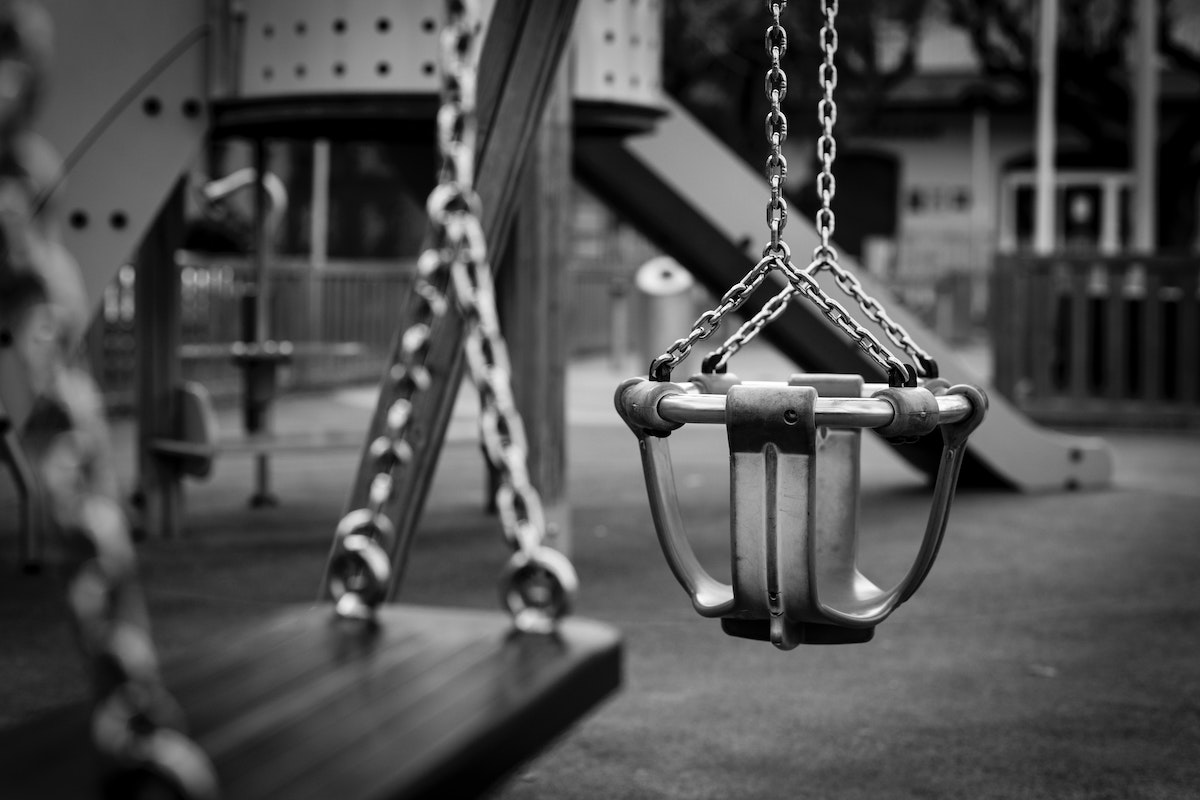Family
Is Foster Care Racist?
The complaints of structural racism and a desire to abolish foster care will sound familiar to anyone who has been listening to the recent debate about policing.

“We need to abolish the foster care system,” Charity Chandler-Cole, a member of the Los Angeles County Commission for Children and Families told her colleagues earlier this month. Chandler-Cole, a former foster youth herself, explained: “I don’t care how big your Office of Equity is, I don’t care how many black people and brown people you hire.” Meanwhile, in a recent op-ed entitled “Now Is the Time for Abolition,” Alan Dettlaff, dean of the University of Houston Graduate College of Social Work, and Kristen Weber, director of equity, inclusion, and justice for the Center for the Study of Social Policy, announced that their “respective organizations have formed upEND, a collaborative movement… [that] works to create a society in which the forcible separation of children from their parents is no longer an acceptable intervention for families in need.”
The complaints of structural racism and a desire to abolish foster care will sound familiar to anyone who has been listening to the recent debate about policing. But the claim that the foster care system suffers from systemic bias and that we need to significantly reduce or end it entirely has been around for years. In 2018, Casey Family Programs, the nation’s largest operating foundation devoted to foster care, advocated the reduction of kids in foster care by 50 percent by 2020. As far back as 2006, a Casey-sponsored report noted that “Children of color enter foster care at rates that are disproportional to their presence in the general population, and they remain in care longer—often far longer.”
The claim has been picked up by the media as well. A 2017 article in the New York Times cited interviews with lawyers working on behalf of parents caught up with the Administration for Children’s Services (ACS) in New York City, who claimed that ACS is engaged in the “criminalization of their parenting choices,” a practice the Times calls “Jane Crow.” A Bronx public defender told the New Yorker, “We are members of this system which we all strongly believe is racist and classist and doing harm to the families it claims to serve.”
There are about 440,000 kids in foster care nationwide, kids who have simply been abandoned or who have been removed from their homes because they were being abused or severely neglected. There are a variety of factors that drive these removals, but there is little evidence that race is among them. Indeed, if black lives really do matter to us, we would not support leaving black children in dangerous homes simply because their parents have already suffered poverty or racism or even abuse themselves, or because we want to balance the columns on our racial spreadsheet.
The first thing to note is that—contrary to the stereotype of nosey white women pulling black and brown children out of their homes because they harbor some personal bias—reports and investigations of child abuse (particularly in large cities) are made just as often by black and brown adults. In New York, for instance, 65 percent of ACS employees were black and 15 percent were Hispanic, a spokeswoman told me in 2017. But just as advocates of abolishing the police have argued that it doesn’t matter whether the police chiefs and officers (not to mention the mayors) of major cities are black because the system is structurally racist, so it seems not to concern critics of foster care that child welfare departments often look like the very people they are investigating.
We should be wary of the claim that any kind of racial bias is driving the disparate impact of foster care. Just as any discussion of policing disparities is incomplete without information on disparities in crime rates, so it is impossible to consider disproportionate foster care numbers without understanding that abuse and neglect occur at different rates in different communities. According to the most recent federal data, in 2018 there were approximately 678,000 victims of substantiated child abuse and neglect, which amounts to 9.2 victims per 1,000 children in the population. The rate for African American children is 14.0 per 1,000, (surpassed only by American Indian or Alaska Native, whose rate was 15.2 per 1,000 children.) In other words, black children are being abused or neglected at a rate more than 50 percent higher than the general population.
These disparities are even visible in child fatalities that are the result of maltreatment. According to the same report: “The rate of African American child fatalities (5.48 per 100,000 African-American children) is 2.8 times greater than the rate of white children (1.94 per 100,000 white children) and 3.4 times greater than the rate of Hispanic children (1.63 per 100,000 Hispanic children).”

Fatalities are a very small number though. Advocates regularly chalk up most maltreatment disparities to findings of “neglect,” which they say are relatively harmless compared to abuse and can be solved by providing families with “services” to help them become better parents or financial resources like food assistance or housing vouchers. As David Kelly, special assistant to the associate commissioner at the US Children’s Bureau, recently explained: “We know that the majority of findings of child maltreatment are for neglect, not physical abuse or exploitation, and we know that there are strong associations between neglect and challenges associated with poverty.”
But the evidence suggests that neglect is neither harmless when compared to physical abuse nor simply a side effect of poverty. In 2017, more than three-quarters of the child maltreatment fatalities in this country occurred as a result of neglect, or neglect in combination with other factors. Only 42 percent occurred as a result of abuse or abuse in combination with other factors.
And there is a clear difference between kids who simply grow up in poverty and kids who have been reported to child protective services as well as those who have been the victims of maltreatment. In a paper entitled “It’s Not ‘Just Poverty’: Educational, social, and economic functioning among young adults exposed to childhood neglect, abuse, and poverty,” Sarah Font of Pennsylvania State University and Kathryn Maguire-Jack of the University of Michigan compare 29,154 people born between 1993 and 1996 in Milwaukee County who were either receiving food assistance or reported to child protective services before the age of 16.
Of kids in the former category, 78 percent graduated high school by the age of 20, compared to 64 percent whose parents were alleged to have neglected them or 59 percent of those who have been alleged to have abused and neglected them. Only two percent of children who were on food stamps did time in state prison before the age of 20, compared with three percent of those whose parents were investigated for abuse, four percent of those whose parents were investigated for neglect, and five percent of those who were investigated for abuse and neglect.
Finally, 13 percent of those who grew up in poverty experienced teen pregnancy. That number jumped to 18 percent for those who experienced alleged neglect, 23 percent for those who experienced alleged neglect and abuse, and 16 percent for those who experienced alleged abuse alone. In some cases it seems that neglect may actually have worse effects than abuse. And both seem to make children’s outcomes significantly worse than just growing up in poverty.
It is certainly true that poverty can contribute to a more violent or neglectful environment for kids. Adults who are stressed about where their next meal is coming from may take things out on their kids. And black families are disproportionately more likely to live in poverty. Substance abuse is also a major factor in the likelihood a child will be abused or neglected. In 2018, 31 percent of children were listed as having a drug-abusing caregiver as a risk factor and 12 percent were listed as having a caregiver who abused alcohol. This doesn’t even include mental illness or an “inability to cope” which is often listed by investigators instead of substance abuse.
Since the black poverty rate is almost twice the rate of the average poverty rate in the US and there is a higher rate of illicit drug use and a lower rate of successful drug treatment, it would not be surprising if there were higher rates of child maltreatment. But the biggest single factor that accounts for child maltreatment seems to be family structure. Kids who live in homes with a mother and her boyfriend are about nine times more likely to be the subject of maltreatment than kids who live with their married biological parents. And there is a higher rate of single motherhood among black families than white families. According to 2014 data from Child Trends, 70 percent of all births to black women occurred outside of marriage, compared to only 29 percent of all births to white women.

Child abuse is also not surprisingly correlated with abuse by domestic partners and no one denies that is higher among black women. In the wake of the arrest of Ray Rice in 2014, Time magazine ran a story by Feminista Jones explaining that “domestic and intimate partner violence (DV/IPV) is a ‘family secret’ in our black communities. While I’m not suggesting that all black people think and function in similar enough ways that we could all be labeled simply as one ‘community,’ I do know we have pervasive problems…” She noted that “black women are almost three times as likely to experience death as a result of DV/IPV than white women. And while black women only make up eight percent of the population, 22 percent of homicides that result from DV/IPV happen to black women and 29 percent of all victimized women, making it one of the leading causes of death for black women ages 15 to 35.”
If we are allowed to say that intimate partner violence is more of a problem in some communities than in others, why can’t we say the same about child abuse? And if it is, why should it surprise us that child welfare is disproportionately involved in the lives of black families? When black women report that their boyfriends are beating them, we don’t just offer them some money and tell them to go to counseling. And we certainly don’t recommend reducing domestic violence investigations or eliminating restraining orders or other legal protections that separate victims from perpetrators. Why should the black victims of child abuse be treated any differently?






